Italian Styles: Renaissance, Baroque, and Rococo Interior & Furniture
1/34
There's no tags or description
Looks like no tags are added yet.
Name | Mastery | Learn | Test | Matching | Spaced |
|---|
No study sessions yet.
35 Terms
Italian Renaissance Interior
Rooms contained famous works of art and accumulated beautiful possessions. Fireplaces were ornamented with mantles. Bolection moldings were typical.
Italian Renaissance walls
• large paintings were incorporated to the architectural design; illusionistic paintings were typical.
• majolica tiles were commonly used.
• pilasters and niches.
Italian Renaissance floors
Black-and-white, colored, or terrazzo were used with occasional Oriental rugs.
Italian Renaissance ceiling
Coffered, beamed, or flat plaster.
Italian Renaissance accessories
• usually in brilliant colors of blues, purples, yellows, and greens when walls are neutral.
• bronze statuettes done in cire perdue process.
• small wall mirrors.
• cameo and intaglio medallions.
niche
A shallow recess, especially one in a wall to display a statue or other ornament.
intaglio
An engraving.
cameo
Any small engraved or carved work in relief.
cire perdue
cartouche
A medallion or coat of arms often decorating the ceiling.
bolection
Molding around a panel.

studiolo
A room intended for meditation and study.
galleria
A room to display acquired artworks.
Italian Renaissance furniture
• monumental in character.
• upholstered seats; usually in silk, velvet, or damask.
• ornamented nail heads used with leather upholstery.
• gesso-painted or gilded.
certosina
Small ivory inlay pattern set in wood work.
pastiglia
Application of gesso to achieve relief.
casonne
Marriage chest; often made in pairs; to contain the bride's trousseau.
cassapanca
A large cassone with back and arms added to form a settee or sofa.
credenza
Sideboards with boards often surmounted by drawers intended for the storage of linen, dishes and silverware.
sedia
Armchair for MEN.
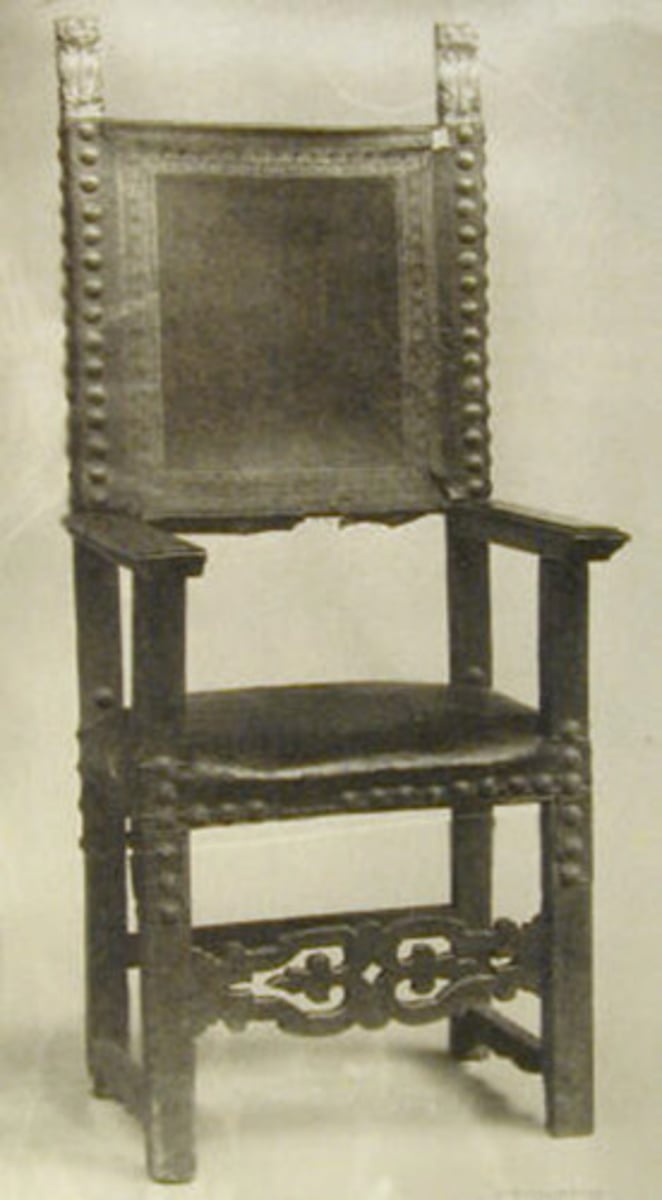
sgabello
A light wooden chair for WOMEN; had two trestles or splat support with stiff back.
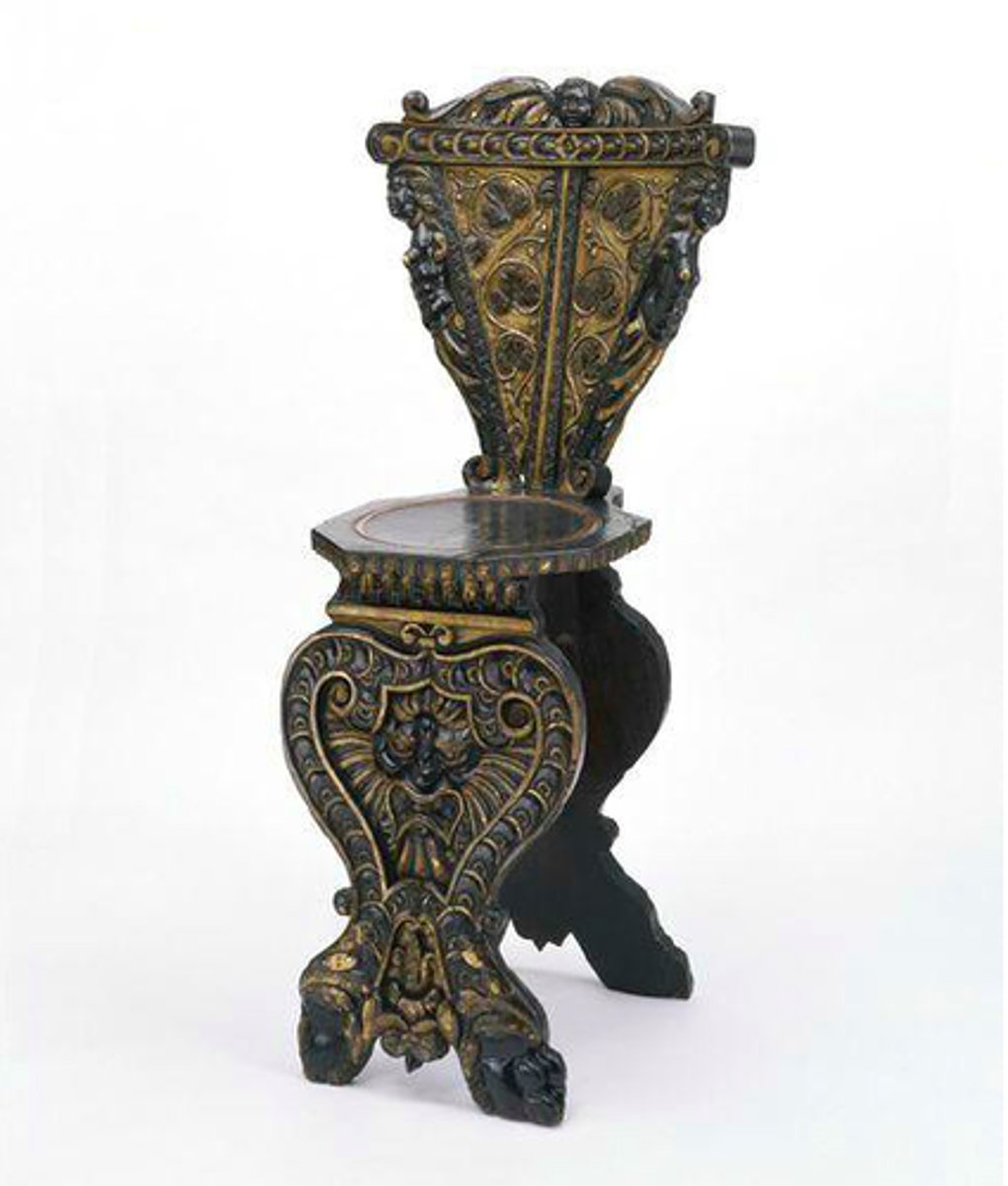
savonarola
An x-shaped chair names after a monk.
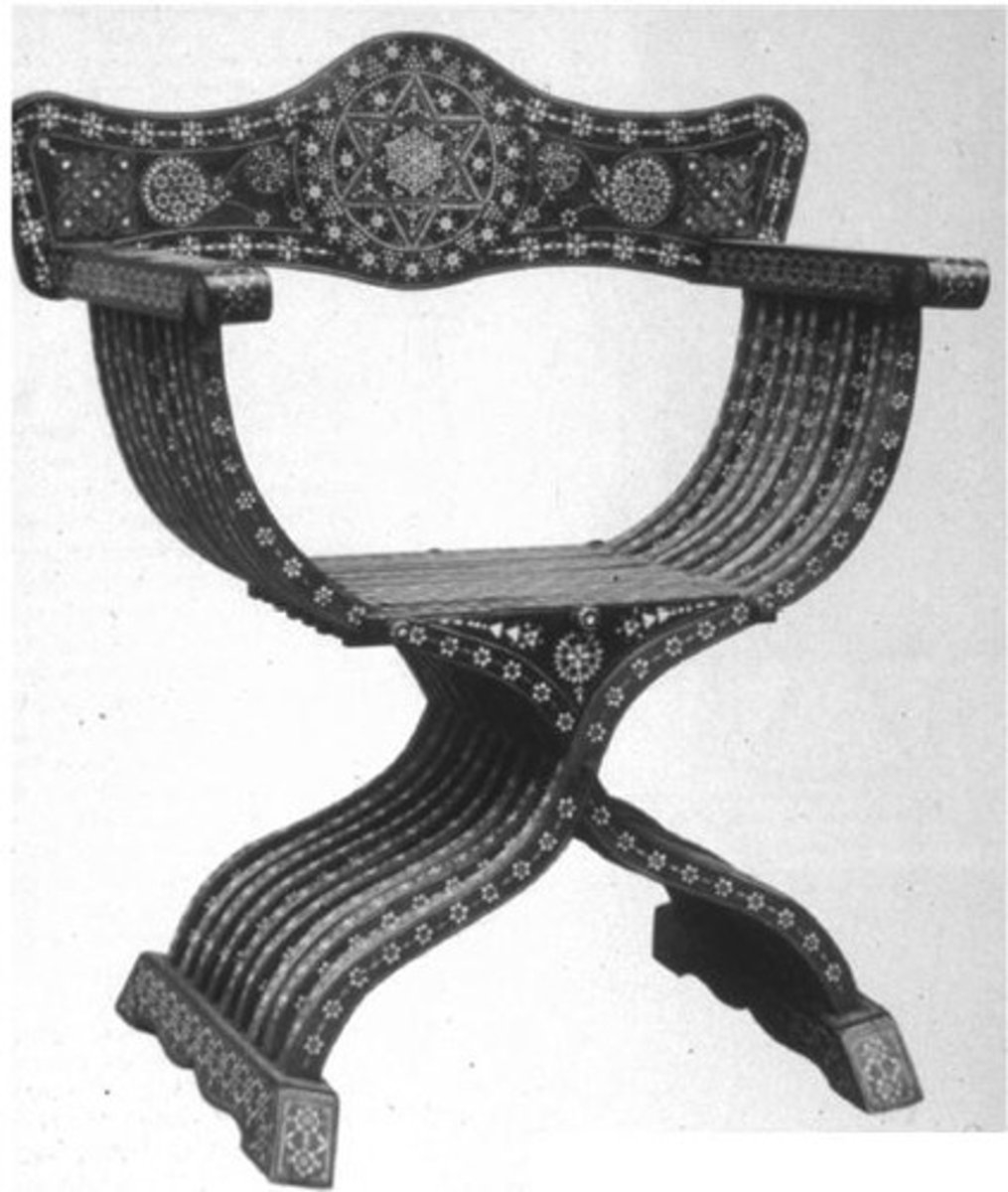
Dante or Dantesque
Usually of tooled leather; a curule in front extended as arm supports while the curule at the back extended as uprights of the back.
panchetto
Similar to the sgabello but had three splayed legs instead of two trestle supports.
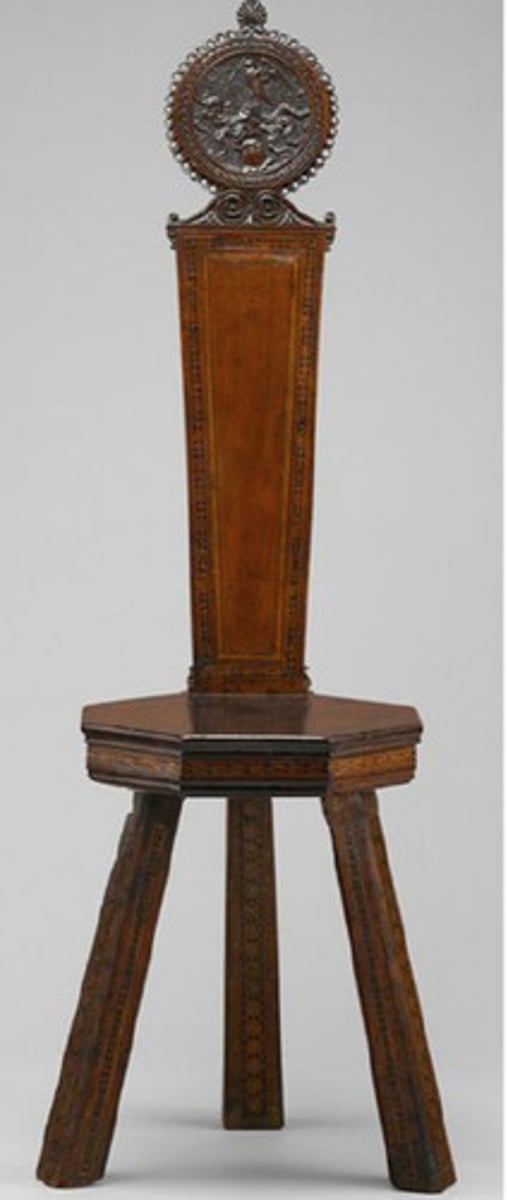
letto
Bed with massive structure placed on a base, a canopy and paneled footboard.
majolica
Large enameled earthenware plates.
Italian Baroque Interior
• grand proportions of rooms.
• great emphasis on fresco painting (walls and ceilings).
• carved woodwork in paint or gold.
• hooded fireplace were typical, but less prominent.
Italian Baroque floors
Disparate colors and patterns were used.
Italian Baroque walls
Stucco, paint, textiles, and marble (occasionally).
Italian Baroque furniture
Spanish influence was evident in the black and white cabinets produced in Naples for the Spanish aristocracy.
quadratura
Painted illusionist architecture.
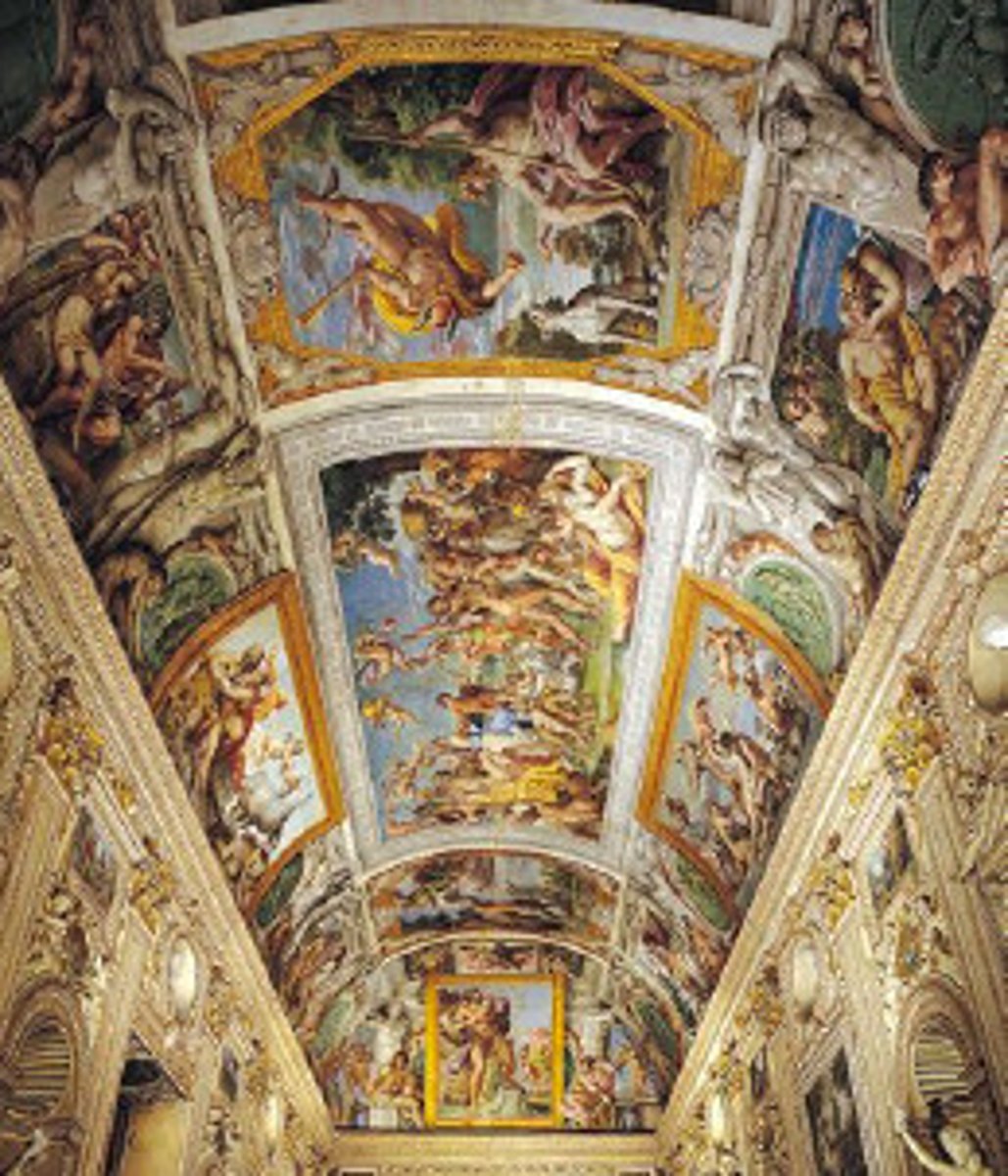
pietra dura
Inlaid stone panels often mounted on ebony cabinets-on-stands.
Italian Rococo
Coarse and tended toward artistic vulgarity.
Italian Rococo furniture
• awkward proportions.
• much gilding used.
• lacquer was employed.
• chinoiserie was used.
• imitated the French styles.
Venetian mirror
Three-paneled mirror with etches of frosted glass.